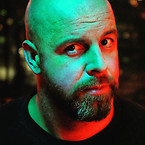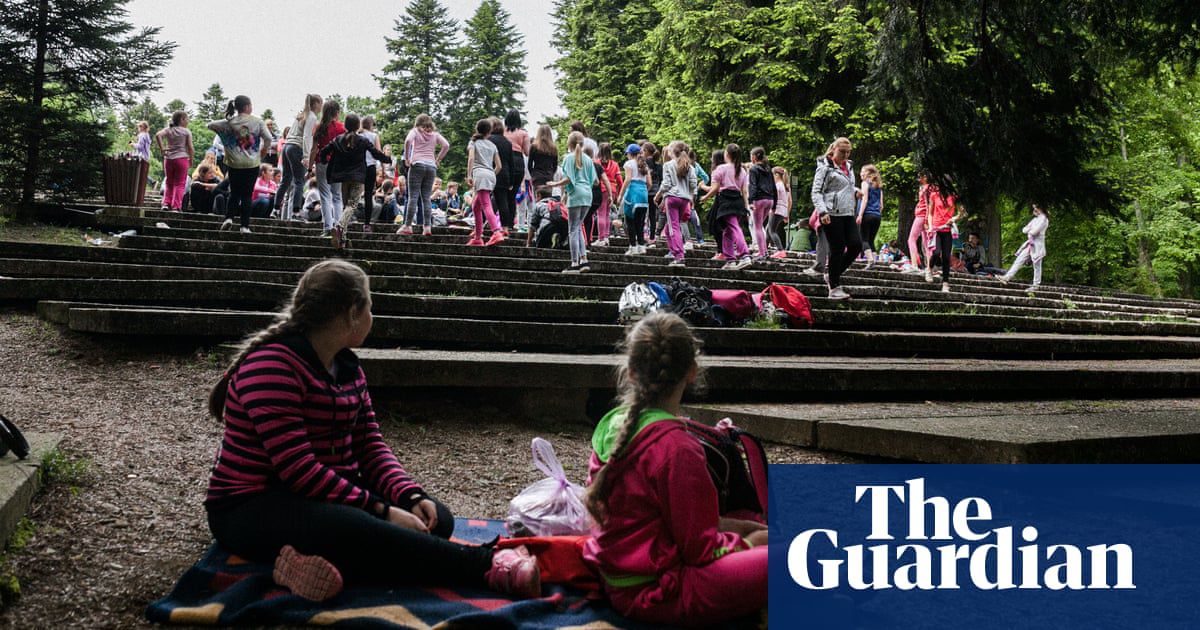ith its winding cobbled streets around a stout 13th-century hilltop fortress, the small city of Jajce looks steeped in Bosnia-Herzegovina 's past. But there may be signs here of a new future for the beleaguered country.
It was here that the local authorities planned to solidify ethnic divisions that have persisted since the 1992-95 war by creating two separate schools - one for Croats and one for Bosniaks.
It was here that students fought back.
"We know that divisions are not good, and that we would all lose by this plan," says Nikolas Rimac, a 17-year-old student. "The way Trump divides America is very, very similar to Bosnia and Herzegovina; he wants to divide the US like Bosnia."
Schools in Bosnia tend to operate under ethnically-defined education systems, with each group being taught a separate syllabus. In many cases there is a "two schools under one roof" system, with, for example, Bosniaks attending a morning shift and Croats an afternoon one.
When the plan was unveiled to go a step further and actually create a separate Bosniak school, many felt that it was a political gambit to win nationalist votes - and create jobs for party loyalists. Students from the school started a series of protests, including marches with the flags of Bosnia, Croatia, and Serbia, and a demonstration outside the regional ministry of education.
"I believed that we needed to keep a common space," says Ivica Jukanović, one of the original leaders. "At school we all became family. I want to raise my children in a city that's normal, and multi-ethnic."
Ever wondered why you feel so gloomy about the world - even at a time when humanity has never been this healthy and prosperous? Could it be because news is almost always grim, focusing on confrontation, disaster, antagonism and blame?
This series is an antidote, an attempt to show that there is plenty of hope, as our journalists scour the planet looking for pioneers, trailblazers, best practice, unsung heroes, ideas that work, ideas that might and innovations whose time might have come.
Readers can recommend other projects, people and progress that we should report on by contacting us at theupside@theguardian.com
Thank you for your feedback.
Jukanović and many of the other pupils and teachers credit the strength of their movement to years of work by the Nansen Dialogue Centre (NDC) Sarajevo, an NGO that works to strengthen inter-ethnic cooperation and communication. Strictly apolitical, the organisation is backed by - but independent from - the Nansen Centre for Peace and Dialogue, based in Lillehammer, Norway.
"I truly believe that the protests were very much influenced by Nansen's work," says Mirjana Jelica, a teacher. "This may be a drop in the ocean, but if they help just 1% of the population become better people, they have achieved something."
NDC Sarajevo also operates in other towns and cities in the country that were among the most-affected by the war, including Srebrenica, where 8,000 Bosniak men and boys were massacred, and Bratunac, where dozens of Serb civilians were killed on Orthodox Christmas Day 1993.
The organisation's leaders, such as general manager Ljuljjeta Goranci Brkic, gradually established the trust and confidence of local people through months of work, including many nights staying in people's houses, and a willingness to engage even hardliners, rather than merely talking to those already receptive to Nansen's methods.
Bosnia remains a society in which ethno-nationalist rhetoric and war memories permeate politics and public discourse.
"When Nansen first came here in 2008, we said: 'What the hell's mediation?'" says English teacher Mirko Ljubez. "Things were pretty bad. Most parents were involved in the war, and that influences their children's political beliefs. But meeting people beats prejudices."
Azra Keljalic, a pupil who made television appearances during the campaign to keep the school together, credits the organisation with helping pupils deal with the media, as well as providing space for them to work together and develop new skills.
The NDC also organised activities with a school from across Bosnia's internal border, which lies 11km away from Jajce.
"Our kids are pretty open-minded, but don't have so many opportunities to talk to people from other ethnic groups, or visit other parts of the country," says Tarik Zjajo, who teaches German and led some of the joint activities.
To the north, another Nansen Dialogue Centre, separate but loosely affiliated, operates from Prijedor, a city of 90,000 people in a mining region.
Prijedor, a mixed city, saw some of the most vicious ethnic cleansing of the war, with thousands of Bosniaks and Croats killed. While many Bosniaks have returned to Prijedor and the region around, the wounds of war are still visible.
One chilly mountain morning, a long crocodile of primary-school children winds up a large concrete staircase through the trees to the grassy summit of Mrakovica, a large meadow with the towering cylindrical Kozara Monument at its centre. Looking something like a modernist interpretation of the Tower of Pisa, it is built to commemorate the dead of an earlier war - the victims of fighting and ethnic cleansing in 1942.
The children, local Serbs, Bosniaks, and Croats, are attending a regular gathering organised by NDC Prijedor. They participate in group games, romping through the forest, on what is a rare opportunity for many of them to mix in large numbers with counterparts from different ethnic backgrounds. One aim is to develop an understanding of how much the children have in common, while also respecting their differences.
"Nobody else is doing this, bringing them together," says Faris Hasanbegović, mayor of Sanski Most, 30km from Prijedor in the Federation. "Before, it was missing. You have kids from Sanski Most, who have never been to Prijedor. Even if they don't have a hostile opinion of others, they don't think about them."
NDC Prijedor has been bringing together community leaders including teachers and politicians, some of whom are otherwise known as hardline nationalists. Rather than lecturing participants on the past, Nansen focused on allowing them to share views and experiences openly. The Nansen Centre for Peace and Dialogue brings mixed groups to Lillehammer every year, providing a remove from the charged political atmosphere of Bosnia. But at first, some of the exchanges were heated.
"When we arrived, we had no mandate, no agenda," says Steinar Bryn, a senior adviser at the Nansen Centre for Peace and Dialogue. "This isn't The Hague. We invited people to discuss: why did it happen? Why was it so violent? But also it was social and cultural - we just went to watch jazz or basketball, or discussed problems at work."
This may not sound groundbreaking, but in the context of a shattered and embittered postwar Bosnia, it is very significant.
Azra Alic-Pasic, a doctor from Prijedor, was forced to sign her property over to the Serb-run municipality before fleeing in a refugee convoy that was then attacked. Both her father and stepfather were killed. She worked for a while in a refugee camp in Croatia before returning after the war to Prijedor, where for a while she was the only Bosniak doctor working in the city.
"In 2000, Priejdor was a black hole on the map of Europe because of what had happened," she says.
"I thought I'd never speak a word to a Serb after the war, that I wouldn't be able to talk to anyone who wasn't a fellow Bosniak. But NDC supported a space where we could discuss with our counterparts of other ethnicities. We saw that we could live together, we brought people together to become friends, to build bridges. We realised that this is the better way - the only way."
This article is part of a series on possible solutions to some of the world's most stubborn problems. What else should we cover? Email us at theupside@theguardian.com

